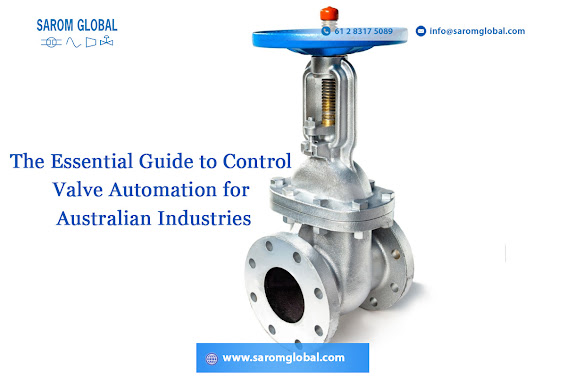The Essential Guide to Control Valve Automation for Australian Industries
In the realm of Australian industries, the integration of control valve automation is a transformative and indispensable move. These components play a significant role in streamlining processes, improving efficiency, and reducing operational costs. In this guide, we will delve into the world of control valve automation, its numerous benefits, essential components, and the key steps for implementing it within your industry.
Understanding Control Valve Automation
Control valves are vital components in various industries, including manufacturing, energy, and process control. They manage the flow of fluids or gases, regulating process variables such as pressure, temperature, and flow rate. When you add automation to these valves, you elevate their functionality, efficiency, and precision.
Control Valve Automation Benefits
Before we explore the components and implementation, let's discuss the benefits of control valve automation:
- Enhanced Precision:
Automation ensures that control valves respond with precision to process changes, maintaining consistent performance.
- Improved Efficiency:
Automated control valves optimise energy consumption and reduce waste, enhancing overall operational efficiency.
- Remote Control:
Automation allows for remote monitoring and control, a crucial feature in industries where on-site access may be limited or hazardous.
- Reduced Operational Costs:
By fine-tuning processes and minimising waste, automation leads to significant cost savings over time.
Automation Components
To understand control valve automation, it's essential to grasp the key components involved:
1. Valve Actuator
The actuator is the muscle of the control valve. It opens and closes the valve in response to control signals. Two common types are pneumatic and electric actuators, each with its advantages and applications.
2. Positioner
The positioner receives the control signal from the process controller and adjusts the actuator's position. This component ensures that the valve precisely follows the desired setpoint.
3. Process Controller
The process controller receives input from sensors and transmitters and sends control signals to the valve. It's the brain behind the automation system, ensuring that the process operates as intended.
4. Sensors and Transmitters
These components measure process variables such as pressure, temperature, and flow. Their data is relayed to the process controller, which then adjusts the control valve accordingly.
Implementing Control Valve Automation
Now, let's discuss the essential steps for implementing control valve automation in your industry:
1. Identify Needs
Determine the specific areas where control valve automation can bring the most significant benefits. It may be in pressure regulation, temperature control, or flow rate management.
2. Select the Right Components
Choose control valves and automation components that match your industry's requirements. Consider factors like valve size, material, and actuator type.
3. Integration
Ensure seamless integration of the control valve automation system with your existing processes and control infrastructure.
4. Calibration and Testing
Calibrate the system and conduct thorough testing to ensure it operates according to the desired setpoints and performance standards.
5. Training
Provide training to your personnel, so they can effectively operate and maintain the control valve automation system.
6. Ongoing Maintenance
Regularly maintain and service the system to ensure its longevity and consistent performance.
Conclusion
Control valve automation is a game-changer for Australian industries, offering precision, efficiency, and cost savings. By understanding the benefits, components, and implementation process, you can make informed decisions and embrace this transformative technology. It's a step toward a more efficient and competitive future for your industry.




Comments
Post a Comment